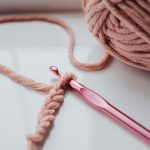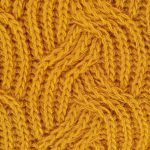When it comes to caring for your chenille items, you want to make sure you're doing everything right to keep them looking their best. But with so many different care instructions out there, it can be hard to know where to start. You've probably heard that chenille fabrics require special care, but what does that really mean? Do you need to hand wash them, or can you machine wash them on a gentle cycle? And what about drying – can you toss them in the dryer, or do you need to air dry them? Let's take a closer look at the best care instructions for chenille items.
Table of Contents
Washing Chenille Fabrics Safely
When washing your chenille fabrics, you'll want to start by checking the care label for specific instructions, as some items may require dry cleaning, while others can be machine washed on a gentle cycle.
If machine washing is allowed, use cold water and a mild detergent that's specifically designed for washing delicate or woolen items. Avoid using harsh detergents or those containing bleach, as they can damage the chenille fibers.
Before washing, gently remove any loose dirt or debris from the fabric. If you're washing a chenille garment, turn it inside out to prevent pilling or snagging. Place the item in a mesh laundry bag to protect it from damage during the wash cycle.
If you're hand washing, gently swish the fabric around in cold water, then let it soak for about 15 minutes. Rinse the fabric thoroughly with cold water to remove all soap residue. Don't wring or twist the fabric, as this can cause it to stretch or lose its shape.
Drying Chenille Items Correctly
When it comes to drying your chenille items, you'll want to follow some key steps to prevent shrinkage, distortion, or damage.
First, you'll need to reshape the item while it's still damp to maintain its original dimensions.
Next, you'll need to decide on the best drying method – and for chenille, that means avoiding the machine dryer and opting for a more gentle approach.
Reshape While Still Damp
To prevent shrinkage and maintain the original shape of your chenille item, it's essential to reshape it while it's still damp. This step is crucial in the drying process, as it helps restore the item's natural shape and prevent distortion.
When you take your chenille item out of the water, gently remove excess water without wringing or twisting it.
To reshape your chenille item, follow these steps:
- Lay the item flat on a clean towel, reshaping it to its original dimensions.
- Use a blocking tool or a ruler to help you restore the item's shape and size.
- Smooth out any wrinkles or creases, working from the center outwards.
Avoid Machine Drying
After reshaping your chenille item, you'll want to let it air-dry, as machine drying can cause irreversible damage, including shrinkage, pilling, and loss of softness.
The high heat and intense tumbling action in a dryer can be too harsh for chenille fibers, leading to a rough, fuzzy texture and a loss of their signature softness.
Additionally, machine drying can cause chenille items to shrink, losing their original shape and size.
To prevent this damage, it's essential to avoid machine drying your chenille items altogether.
Instead, gently remove excess water from the item without wringing or twisting it, and let it air-dry.
This may take longer than machine drying, but it's the best way to preserve the quality and texture of your chenille items.
By air-drying your chenille items, you can help maintain their softness, prevent pilling, and keep them looking their best.
Air Dry Flat
Lay your chenille item flat on a clean, dry towel, reshaping it to its original dimensions to prevent stretching or distortion during the drying process. This is a crucial step in air drying your chenille items, as it helps maintain their shape and texture. You'll want to smooth out any wrinkles or creases, making sure the item is evenly spread out.
- Avoid direct sunlight, as it can cause fading or discoloration.
- Don't hang your chenille item to dry, as this can cause stretching or distortion.
- Use a fan to speed up the drying process, but keep it on a low setting to prevent pilling or snagging.
Removing Chenille Fabric Stains
When removing stains from your chenille items, you'll want to act quickly and carefully to prevent them from setting.
You'll need to identify the type of stain and choose the right approach to tackle it, whether it's a minor spill or a stubborn spot.
Blot the Stain Gently
Gently blot the stain with a clean, damp cloth, working from the outside in to prevent it from spreading further. You don't want to rub the stain, as this can damage the chenille fibers. Instead, focus on gently lifting the stain away from the fabric. This will help to prevent it from setting in and making it more difficult to remove.
Different stains require different approaches. As you blot the stain, pay attention to the type of stain you're dealing with.
- Don't over-saturate the fabric: Chenille can shrink or lose its texture if it's exposed to too much water.
- Avoid using paper towels: They can leave behind lint or even scratch the fabric.
- Use a clean, white cloth: This will help to prevent any dyes or finishes on the cloth from transferring to the chenille fabric.
Pre-Treat Tough Spots
For particularly stubborn stains, you'll need to pre-treat the area before washing to increase the chances of removal. This step is crucial in preventing the stain from setting in and making it harder to remove.
To pre-treat tough spots, you can use a stain remover or a solution of equal parts water and white vinegar. Apply the solution directly to the stain and gently work it in with a soft-bristled brush or a clean cloth. Let it sit for about 10-15 minutes to allow the solution to penetrate the fabric.
For protein-based stains like blood or sweat, you can use an enzyme-based stain remover. For oil-based stains like grease or ink, you can use a solvent-based stain remover. Always read the label and follow the instructions on the stain remover, and test a small, inconspicuous area of the fabric first to ensure the solution doesn't damage the chenille.
After pre-treating the stain, gently blot the area with a clean cloth to remove any excess solution. This will help prevent any damage to the fabric during the washing process.
Wash in Cold Water
To remove chenille fabric stains, wash the item in cold water using a mild detergent specifically designed for washing delicate or woolen items.
This will help prevent damage to the fabric and ensure the stain is removed effectively. When washing, gently swish the item around to work the detergent into the fabric, then let it soak for about 15 minutes.
Use a mild detergent that's free of harsh chemicals and bleach. Avoid wringing or twisting the item, as this can cause it to lose its shape or become misshapen.
Gently squeeze out excess water without wringing or twisting the item. Reshape the item to its original dimensions while it's still damp to prevent shrinkage.
Ironing Chenille With Care
When ironing chenille items, you'll want to use a low to medium heat setting to prevent scorching or damaging the soft, fuzzy pile. It's also essential to use a pressing cloth to protect the fabric from direct heat. You can use a cotton cloth or a specialized pressing cloth designed for delicate fabrics.
Here are some additional ironing tips for chenille items:
| Ironing Tip | Description |
|---|---|
| Use steam sparingly | Steam can help remove wrinkles, but excessive steam can damage the fabric. |
| Avoid ironing over buttons | Buttons can melt or become misshapen if exposed to high heat. |
| Don't iron over sequins or beads | These can melt or become dislodged if exposed to heat. |
| Iron while the fabric is still slightly damp | This will help remove wrinkles more effectively. |
| Hang the item immediately after ironing | This will help prevent wrinkles from reforming. |
Storing Chenille Items Properly
After ironing your chenille item, you'll want to store it properly to maintain its softness and prevent pilling – storing it correctly will also help prevent wrinkles from forming in the first place.
When storing your chenille item, it's essential to keep it away from direct sunlight, as UV rays can cause fading and discoloration. You should also avoid storing your chenille item in humid environments, as moisture can lead to mildew and damage.
Store your chenille item in a breathable bag or container to allow for airflow and prevent moisture buildup.
Fold or roll your chenille item instead of hanging it, as hanging can cause stretching and distortion. Place a sheet of tissue paper or a cloth between folds to prevent pilling and creasing.
Store your chenille item in a cool, dry place, such as a closet or drawer, to maintain its softness and prevent damage.
Special Care for Chenille Blankets
If you own a chenille blanket, you'll want to give it some extra TLC to keep it looking its best and ensure it remains a cozy companion for years to come.
When it comes to special care for chenille blankets, it's all about gentle handling and avoiding harsh chemicals. You'll want to avoid exposing your blanket to direct sunlight, as this can cause the colors to fade. If you need to dry your blanket, tumble dry it on a low heat setting or air dry it away from direct sunlight.
It's also a good idea to brush your chenille blanket regularly to prevent pilling and keep the fibers looking their best. Use a soft-bristled brush or a lint roller to gently remove any loose fibers or debris.
Avoid using fabric softener or bleach on your chenille blanket, as these can damage the fibers and affect the texture. By following these simple care instructions, you'll be able to keep your chenille blanket looking its best and enjoy it for years to come.
Tips for Hand Washing Chenille
To hand wash your chenille item, start by checking the care label to ensure it can be hand washed, then gently submerge it in cold water with a mild detergent specifically designed for washing delicate or woolen items. Avoid using hot water, harsh detergents, or bleach, as these can damage the chenille fibers. You'll also want to avoid wringing or twisting the item, as this can cause it to lose its shape.
Gently swish the item around in the water to distribute the detergent, then let it soak for about 15 minutes.
Rinse the item thoroughly with cold water to remove all soap residue.
Use a clean towel to gently blot excess water from the item, rather than wringing or rubbing it.
Lay the item flat on a clean towel to air dry, away from direct sunlight and heat.
Frequently Asked Questions
Can I Use Fabric Softener on Chenille Items?
When washing delicate items like chenille, you're probably wondering if fabric softener is safe to use. Generally, it's best to avoid using fabric softener on chenille items, as it can reduce their softness and cause pilling.
How Often Should I Dry Clean Chenille Garments?
You should only dry clean your chenille garments when absolutely necessary, as it can cause wear and tear. Check the label for specific cleaning instructions, but generally, dry cleaning once a year is sufficient, depending on wear.
Are Chenille Fabrics Prone to Pilling or Snagging?
You'll find that chenille fabrics can be prone to pilling or snagging, especially if they're made from low-quality materials or aren't woven tightly. However, high-quality chenille fabrics with dense weaves tend to resist pilling and snagging better.
Can I Use a Steamer to Remove Wrinkles From Chenille?
You can definitely use a steamer to remove wrinkles from chenille items. Just hang them up and steam gently, as excessive heat can damage the fibers. It's a great alternative to ironing, which can be harsh.
Are Chenille Items Suitable for Outdoor Use?
You're wondering if chenille items are suitable for outdoor use. Generally, it's not recommended as chenille fibers can fade, shrink, or lose their softness when exposed to direct sunlight, moisture, or extreme temperatures.
- Can Nonwoven Fabric Be Used for Upholstery? - July 11, 2025
- The Complete Guide to Nonwoven Polypropylene Tote Bags - July 11, 2025
- What Is Hydrophilic vs. Hydrophobic Nonwoven Fabric? - July 11, 2025







